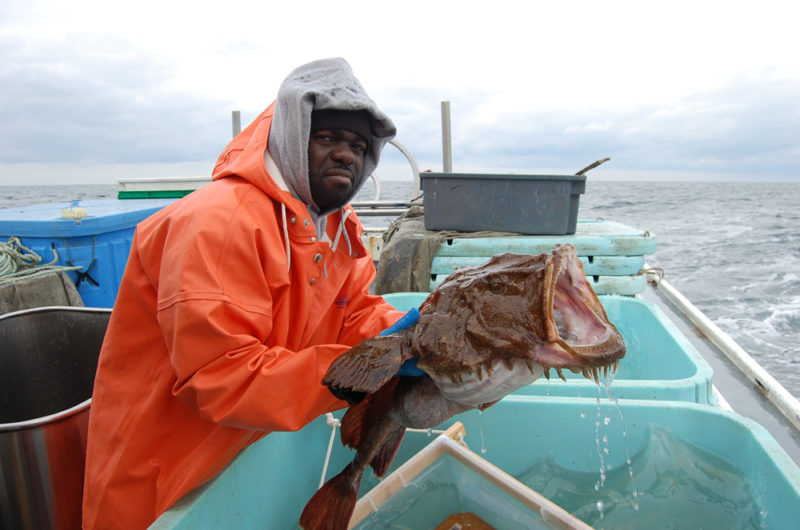Climate change will force adaptation onto fishing fleets and communities in the Mid-Atlantic and New England, as warming ocean temperatures change the range and habitat of long-established species, according to a new study.
Hardest hit in the coming years could be Maine’s already-shrinking dragger fleet, where small vessels based at places like Port Clyde already suffer from cod and other groundfish declines influenced by the environmental changes, according to the paper published in the journal Nature Climate Change.
But Mid-Atlantic fishermen could see their own declines in key species like monkfish, as temperature changes push their suitable habitat north and east, wrote researchers from Rutgers, Stanford and Princeton universities, the University of Massachusetts Dartmouth, and NOAA’s Alaska Fisheries Science Center.
“We expect gains in the Gulf of Maine for some of these species and losses in the south,” said Malin Pinsky, an associate professor in the Department of Ecology, Evolution and Natural Resources at Rutgers, which is mapping predicted species shifts at oceanadapt.rutgers.edu.
“We are looking at longer-term changes over the next couple of decades,” said Pinsky.
The team used 13 global climate change models to predict how ocean temperatures are likely to change, and compared temperatures and bottom habitats to project where commercial species are likely to move over time.
They drew on all available fisheries data for federal waters, except for lobster vessels, and looked at 91% of all recorded groundfish, longline and gillnet trips. To model the potential economic impact of species shifts, the scientists used vessel trip reports and data specific to ports. That helped to model the impact on entire communities, “not just the owners of the boats,” said Pinsky.
While the fish species shift, the study recognizes how fishermen’s adaptation can be limited by vessel size, range and gear type, their local ecological knowledge, and management rules.
Of 33 species considered, habitat for 24 species is projected to improve in some regions, while deteriorating in others during by the timeframe of 2040 to 2050. Notably, monkfish is expected to expand northward into the Gulf of Maine, but lose suitable habitat in the Mid-Atlantic — including off New Jersey, where the modern gillnet fishery for domestic and export markets developed in the 1980s and ’90s.
Of 85 fishing communities examined in the study, researchers predict 64 will face increased risk with fewer fish available as habitats change. The Maine dragger fleet tops that list because of its longtime dependence on cold-water species like Atlantic cod and witch flounder, the study says.
“However, we also found small-scale differences. For instance, communities-at-sea for small groundfishing vessels in Sandwich and Chatham, Mass.,” the authors wrote. While separated by only 28 miles, the Sandwich-based fleet depends on winter flounder for 67 percent of its revenue, which would be less exposed to change under the climate models.
By contract, Chatham fishermen count on witch flounder for 24 percent of their revenue and cod for 21 percent, with just 10 percent coming from winter flounder, the study notes.
Sea scallops — by far the richest East Coast fishery with 2018 landings valued at $512 million — will not escape the changes, the scientists project.
“Overall we are looking at projected decline in scallops. Those are strongest in the Mid-Atlantic and Georges Bank,” said Pinsky.
For fishing communities to adapt to those changes, vessels and crews will need to redirect to where their target species are moving, or shift their focus to “winner” species that are moving into habitat as others retreat, the study says. The authors looked forward decades, "over the investment horizon," for how fishermen and communities will need to prepare, said Pinsky.
In the Mid-Atlantic off New Jersey — where decades ago gillnetters and foreign distant-water fleets could target cod — gillnet captains have been creative since the late 20th century, with an ocean intercept fishery for now-protected Atlantic sturgeon, then monkfish, and dogfish.
The appearance of croakers in this century — following a warming trend up from Virginia and the Carolinas — opened a new fishery for them. If the latest study is borne out, future generations of fishermen will be doing the same.







